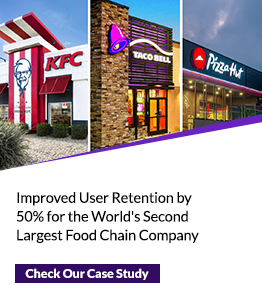Optimizing Performance: Leveraging Software Testing Metrics for CTOs

The seamless integration of software testing and quality assurance forms a powerful alliance to guarantee the highest level of quality for your software product. As these two practices collaborate, one diligently identifies and rectifies existing errors, while the other methodology strategically emphasizes pre-emptive measures to avoid discrepancies from arising.
A professional tester is responsible for meticulously planning and orchestrating important software testing metrics. By leveraging software testing metrics, IT leaders such as CTOs can enhance their planning capabilities and ensure a comprehensive approach to quality assurance.
What are Software Testing Metrics? Why are they Significant?
Software testing metrics are numerical indicators employed to gauge the effectiveness, efficiency, and quality of the software testing process. These metrics offer unbiased data and valuable insights into different facets of testing, empowering CTOs to make well-informed decisions, monitor progress, and foster ongoing enhancements.
Software testing metrics play a pivotal role in evaluating the overall success of the testing efforts. It helps assess the performance of testing endeavors, identifying areas for improvement and guaranteeing adherence to desired quality standards. In other words, software testing metrics provide a clear definition of testing objectives and assign measurable values to determine success or failure. This enables organizations to optimize their testing strategies by leveraging these metrics, ultimately improving product quality and ensuring a smooth user experience.
Quality Assurance
By monitoring pertinent QA testing metrics, CTOs can obtain a clear view of the quality of the software being tested. Quality assurance metrics like defect density, defect leakage rate, and test coverage offer valuable insights into the overall quality level and assist in ensuring that the software meets the desired standards. This visibility into software quality enables CTOs to make informed decisions and take proactive measures to enhance the testing process.
Objective Assessment
Software testing metrics offer an unbiased evaluation of the testing process, empowering CTOs to assess the effectiveness of their testing strategies and identify areas for improvement. These metrics for testing in software engineering provide concrete data that can be analyzed to make well-informed decisions and foster ongoing enhancement. By leveraging software testing metrics, CTOs can drive continuous improvement in their testing practices.
Risk Mitigation
CTOs can minimize the occurrence of critical failures by proactively identifying potential risks through monitoring metrics such as defect severity distribution, test coverage, and regression test effectiveness. They can then take necessary actions to mitigate these risks.
Resource Optimization
CTOs can optimize resource allocation using testing metrics to identify bottlenecks, inefficiencies, or underutilization. Examining metrics such as test execution time, resource utilization, and defect distribution allows CTOs to make informed decisions about resource allocation. This ensures optimal utilization of resources and cost-effectiveness.
5 Metrics Every CTO Must Know About Quality Engineering
In today’s customer-centric era, where quality plays a paramount role in shaping your brand perception, it has become essential to monitor the data associated with the metrics being addressed. The information derived from these metrics is interconnected and assists IT leadership in gaining a comprehensive understanding of the current status and performance.
1. Efficiency Metrics
Automation is a crucial factor to consider when aiming to enhance efficiency. It is important to measure various aspects such as design and execution velocity, the effectiveness of automation efforts compared to manual efforts reduced, defect detection efficiency, release and deployment efficiency, environmental parameters, downtimes, and the comparison of planned versus actual metrics for design and execution.
2. Productivity Metrics
Productivity metrics provide insights into your current cycle and aid in estimating future efforts accurately. With unique applications and projects, relying on a single formula for effort estimation is ineffective. Accurate capture of burn rates, design and execution productivity, and environmental parameters is necessary to enhance team productivity. Variances in tolerance levels vary across enterprises, demanding appropriate threshold assignments.
3. Effectiveness Metrics
Your testing team may invest significant time executing tests with exceptional results in QA environments. However, it is possible that the tested modules have not been modified or insufficient time has been allocated for testing, resulting in delays or production defects. The aim is not to eliminate regression tests but to optimize the effectiveness of testing efforts. Measuring effectiveness is crucial for assessing functional versus regression effort, defect yield, defect density, impact analysis, coverage analytics, performance metrics, security analytics, and environmental metrics.
4. Defect Metrics
Categorizing defects based on their detection timing in the software lifecycle holds greater value than mere identification. Defect metrics should encompass aspects like analysis, severity, original occurrence, rejection rate, root cause analysis (RCA), module-wise distribution, automation-reported defects, and more. Understanding and reporting the causes of defects, including environmental factors, data issues, requirements, and other relevant factors, is crucial.
5. Production Metrics
To comprehend the quality of your application, the most effective approach often lies in analyzing production metrics. Key production metrics that should be considered to assess application quality include planned versus actual run time for performance capacity, response times, real user experience, synthetic monitoring, uptime, proactive detection of defects in production, and defects reported by customers.
Conclusion
For CTOs, selecting appropriate metrics, monitoring them consistently, and taking necessary steps to enhance them are crucial for a successful software testing operation. This approach enables data-driven decision-making, optimizes resource allocation, mitigates risks, and aligns testing efforts with strategic goals.
At ImpactQA, we are prepared to support CTOs in effectively leveraging software testing metrics. Our association with CTOs across multi-industry domains has proven beneficial in understanding the pain points and serving them with better test strategies for quick identification and removal of discrepancies.




